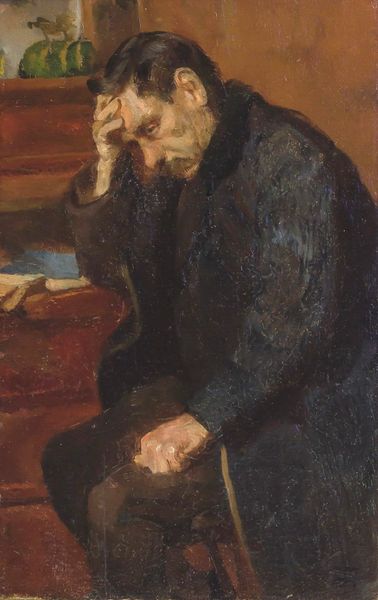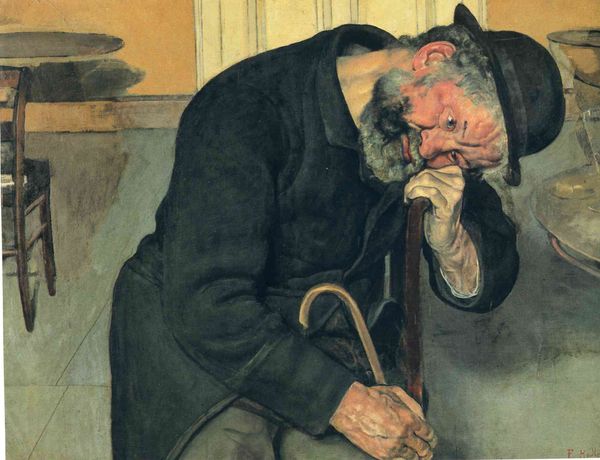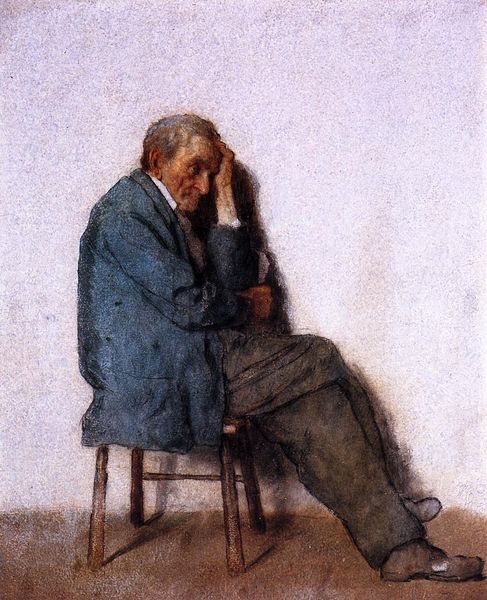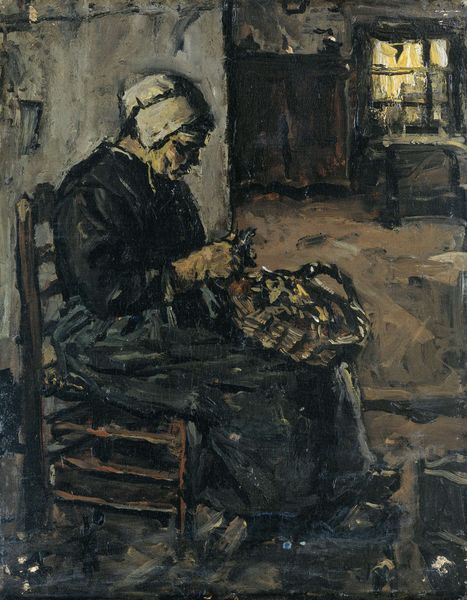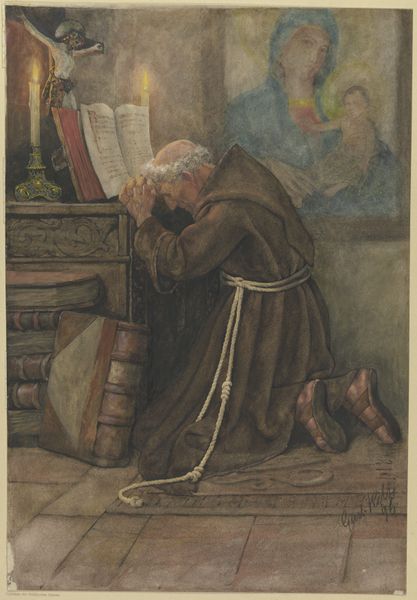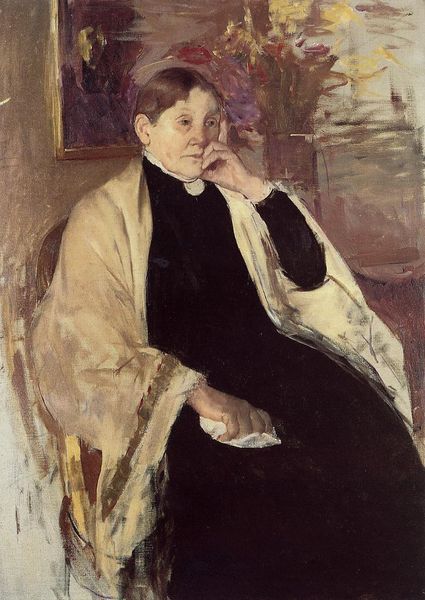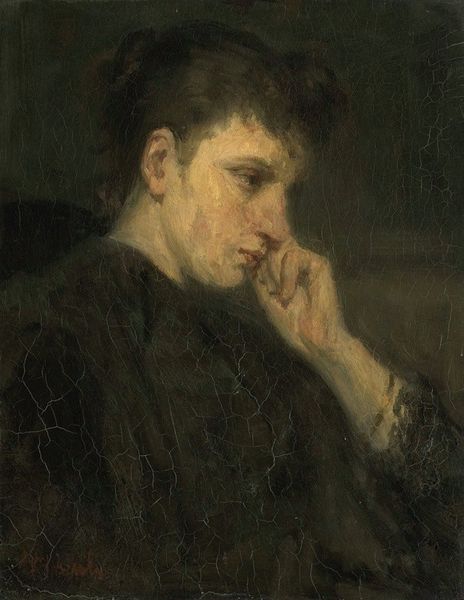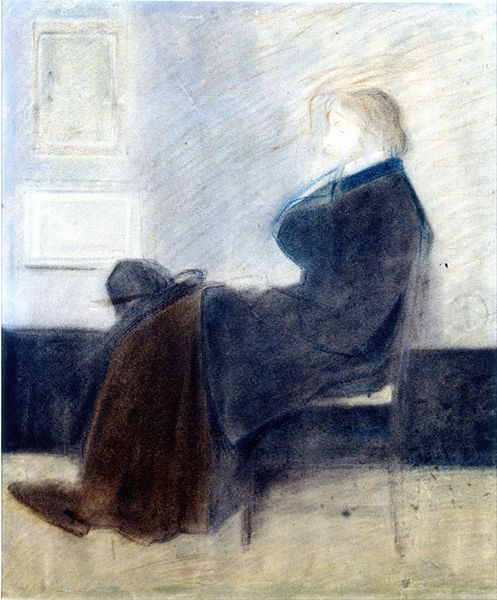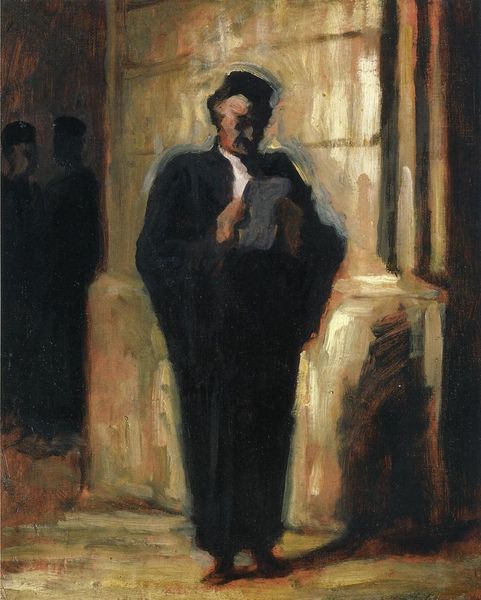
painting, oil-paint
#
portrait
#
painting
#
oil-paint
#
oil painting
#
symbolism
#
genre-painting
#
post-impressionism
#
portrait art
#
watercolor
Dimensions: 56.2 x 45.08 cm
Copyright: Public domain
Art Historian: Editor: Editor: Here we have Ferdinand Hodler's "The Disillusioned One" from 1892. It's an oil painting, and the somber mood really hits you right away. I’m curious about the composition; what strikes you about the visual arrangement of elements in this work? Art Historian: What intrigues me immediately is the painting's spatial ambiguity. Consider how the figure relates to the implied space. Where precisely is he situated? Note how the plane on which he sits seems divorced from any distinct environment. How does this constructed space, or lack thereof, influence your interpretation? Editor: I see what you mean. It's like he’s suspended, disconnected. Maybe that amplifies his… well, disillusionment? It definitely draws attention to *him*, and not anything around him. Is there a symbolic reading in how Hodler is using form to reflect theme? Art Historian: Precisely. Focus on the restricted palette – muted whites and blacks, drained of vivacity. Observe the textures too: the coarse brushstrokes contrast starkly with the smooth skin of his face. And note, above all, the geometry in the positioning of his figure with the hard horizontality of the bench: What does that suggest to you, visually? Editor: Perhaps rigidity… or being stuck? Also I now see how his pose seems to mirror the angles in the bench. Art Historian: Exactly. Through these careful choices of line, color, and texture, the emotional weight becomes structurally inherent to the painting. Have we seen a unification of form and content? Editor: This has given me a totally new way of looking at portraits; It’s more than capturing a likeness! I’ll definitely keep the formal relationships in mind for my next essay! Art Historian: A productive shift, then! Remembering that art’s expressive capacity emerges from such orchestrated formal relationships can enrich our interpretations substantially.
Comments
No comments
Be the first to comment and join the conversation on the ultimate creative platform.
